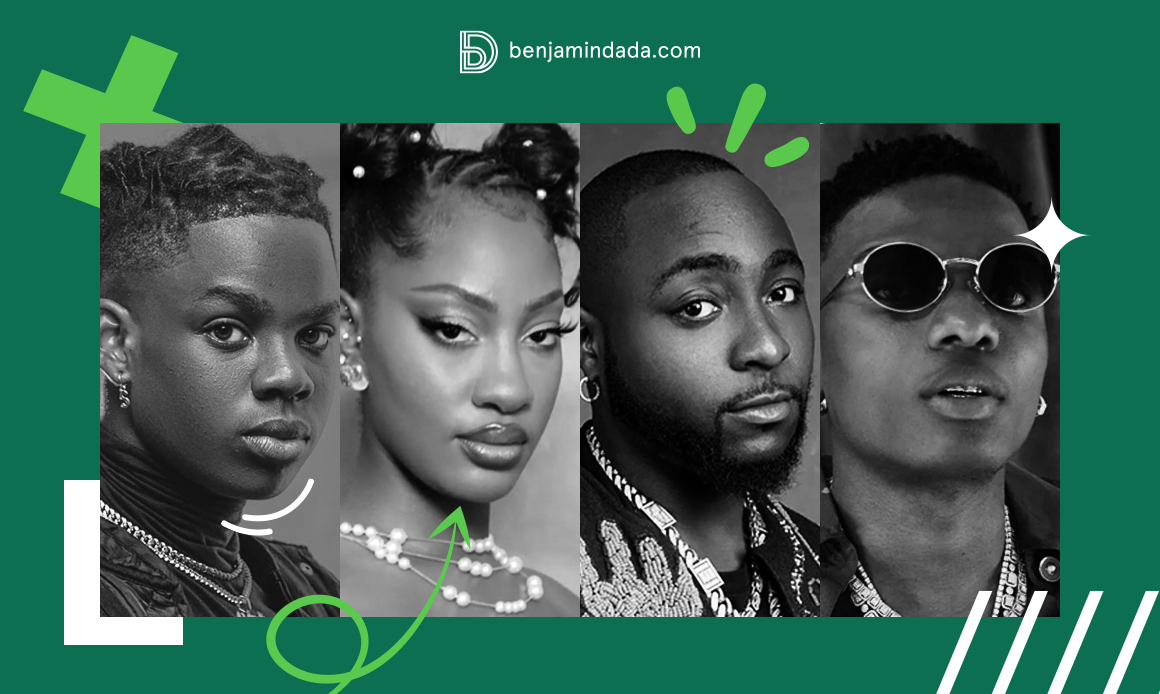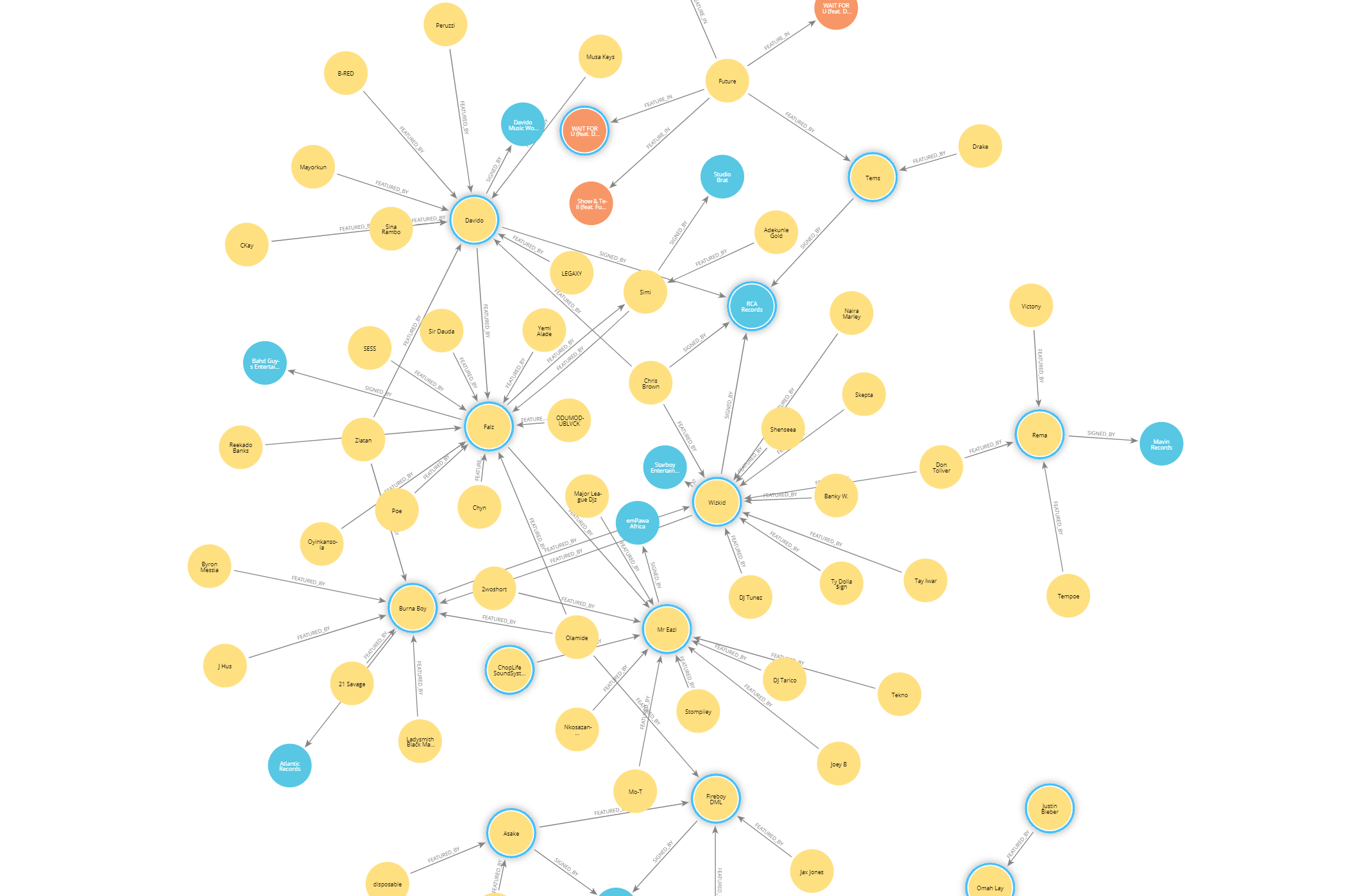Graph the True Data and Reality
Modeling reality isn’t about getting it perfectly right. It’s about getting close enough to act meaningfully

In my previous article, I briefly touched on the concept of an Afrobeat collaboration network, a passion project aimed at understanding the Afrobeat music scene and its collaborations. While this was more of an exploratory endeavor rather than a comprehensive study, it gave me a fascinating glimpse into how the industry works. The project spanned two Saturdays and a Sunday, totaling about 20 hours, from data collection and ideation to analyzing the results. So don’t expect a definitive take on the subject, it’s just a start!
The data we worked with was primarily sourced from Spotify’s API and supplemented by independent research. We didn’t perform a thorough validation of record labels or music organizations, and the dataset was relatively small, a sample of 25 Afrobeat artists and their tracks and albums released over the past six years. While it doesn’t represent the entire industry, I believe the insights we gained offer an intriguing first step toward understanding the Afrobeat collaboration network. Also, we welcome feedback on how to make this better, this include visualization and content wise.

Afrobeat has exploded in popularity globally, with artists like Davido, Wizkid, and Burna Boy gaining international acclaim. Yet, beyond these names, we see a new wave of artists such as Rema, Asake, Tems and Fireboy DML making their mark on the scene. While the debate over who the best Afrobeat artist is will likely rage on for years, it was interesting to see, through this project, how interconnected these artists are.
I’ve always wondered why comparisons between Wizkid and Davido were so heated, especially when their styles are so distinct. While researching, I realized both artists, at various points, had distribution deals with RCA Records, a major American label. This discovery was striking. Two artists, constantly pitted against each other by fans, essentially have money flowing from the same source. So, what fuels this competition? Is it genuine rivalry, or is it a narrative pushed by the media and the industry to maintain interest and, by extension, profits?
 The above image shows how interconnected Afrobeat artists are, especially those signed under the same record labels, with several collaborations happening between them.
The above image shows how interconnected Afrobeat artists are, especially those signed under the same record labels, with several collaborations happening between them.
One of the most eye-opening findings of this exploration was the role of record labels in shaping collaborations. Chris Brown, for example, has collaborated with both Wizkid and Davido. Interestingly, he too is signed to RCA Records. This pattern suggests that collaborations might not always be purely artistic decisions; labels likely play a significant role in determining which artists work together.
As we dig deeper, we realize that labels themselves are part of larger conglomerates. Mavin Records, home to stars like Rema and Ayra Starr, is partly owned by Universal Music Group (UMG), which has made significant inroads into African music. Mavin has built a reputation for nurturing new talent, which contrasts with some other artist-owned labels like Starboy Entertainment (Wizkid’s label) and DMW (Davido’s label), where younger artists often leave after a short period.
This nurturing aspect is important, especially in an industry where many artists need to remain in the spotlight to stay relevant. Mavin’s structure, not being centered around a singular artist, allows for a focus on growth and development of new talent, which is something other artist-owned labels often struggle with.

Here, the feature network demonstrates how certain artists, are being feeatured by other artists.
One particularly interesting insight was the collaboration between Olamide and Asake. Both are part of YBNL Nation, Olamide’s label, which has distribution through Empire. They’ve worked together on about seven tracks, demonstrating how artists within the same label often collaborate to amplify their reach.
Similarly, we see artists like Falz, who has been in the industry for a while, creating his own network. Falz has collaborated with the likes of Mr. Eazi, Davido, and Simi on about ten tracks or more. This interconnectedness highlights how collaborations can serve as a form of mentorship, helping newer artists gain exposure while also keeping established artists relevant.
At the core of this project was a desire to understand how Afrobeat artists collaborate, both across tracks and albums. The graph model we built allowed us to map these collaborations in two primary ways:
“Collaborated With” Relationship: This relationship tracks when two or more artists either performed or were featured on the same track. It helps identify how often artists collaborate directly on a song.
“Featured By” Relationship: This reflects when one artist features another on their track, offering insight into how artists help each other gain exposure by lending their fame or talent to someone else’s work.
What surprised me was that many artists tend to collaborate with artists signed to the same label or those with distribution deals through the same companies. For instance, the label RCA Records houses artists like Davido, Wizkid, and Tems, showing how this label dominates much of the Afrobeat collaboration space.
One of the most fascinating aspects of the Afrobeat industry is how interconnected the financial ecosystem is. It’s not just about talent or popularity, it’s about the business behind the music. As I started digging into the connections between artists, labels, and the conglomerates that own these labels, it became clear that the money flows in very particular ways.
For example, while Wizkid and Davido might be seen as rivals, both have ties to RCA Records, and that suggests a level of financial interdependence. The competition fans perceive may be driven more by business interests than anything else. Similarly, with Universal Music Group’s growing presence in Africa through labels like Mavin Records, we’re seeing global players exerting more control over who gets promoted, who gets to collaborate, and ultimately, who dominates the charts.
This project is just the beginning. It offered a glimpse into how interconnected the Afrobeat world is, but there’s so much more to explore. For example, we didn’t delve into the economics behind the labels, the role of distribution deals, or how these collaborations affect an artist’s long-term career. Also, we didn’t do graph analytics, which could help in understanding central figures in the collaboration network.
Looking forward, I hope to continue this research, perhaps in 2025, by collaborating with industry experts who can help ask better questions and make sense of the data. Ultimately, I believe that understanding collaboration networks in music is key to understanding how the industry works, and Afrobeat offers a fascinating case study. The hope is that by following the money, and mapping the collaborations, we’ll uncover insights that could benefit both artists and the industry as a whole.
In the meantime, I hope this initial exploration inspires others to dig deeper into the data behind the music they love. There’s so much more to discover!
Music, especially Afrobeat, is not just about the sound, it’s about the relationships, the business, and the structures behind the scenes. By mapping collaboration networks, we can gain insight into the unseen forces that shape the industry. I’m excited to see where this journey takes us and how future projects can build on this initial work.
You can access the image from the exploration here